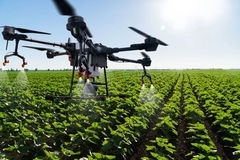EU Commission Proposes to Clarify the Use of the Sales Description 'Veal'
The proposal would require the use of fixed sales descriptions for these meats in the various Member States coupled with an indication of the age of the animals at slaughter.

25/09/06 The European Commission has tabled a proposal to clarify the marketing conditions for meat from bovine animals aged twelve months or less. The proposal would require the use of fixed sales descriptions for these meats in the various Member States coupled with an indication of the age of the animals at slaughter. The proposal aims to improve the transparency on the market and to help consumers to recognise precisely what they are buying. It follows lengthy discussions with all interested parties, including a recent internet consultation. It comes in the wake of requests from the trade and from Member States for clearer rules to reflect the different production systems in different Member States. Once adopted by Council, this regulation should enhance the functioning of the Single Market and provide better information for consumers.
The production and marketing of meat from cattle aged twelve months or less and its characteristics at the time of slaughter often differ from one Member State to another. There are two major types of production system. In the first, the animals are fed mainly on milk and milk products and are slaughtered before the age of eight months. In the second system, the animals are fed almost exclusively on cereals – primarily maize – supplemented with fodder, and are slaughtered at an age of ten months and above. While the first type of production exists in almost all Member States, the second has developed in only a small number of Member States, mainly the Netherlands, Denmark and Spain.
On the main consumer markets in the EU, meat from these different production systems is generally marketed under one single sales description – ‘veal’. As a rule, no reference is made to the type of feed received by the animals or their age at the time of slaughter.
Experience shows that this practice could disturb trade and encourage unfair competition. Consequently, it has a direct effect on the proper functioning of the single market: ex slaughterhouse, there are price differences of about EUR 2 to EUR 2.50 per kilogram between meats produced under the two systems. This practice could also cause confusion for consumers because it is likely to mislead them as to the actual characteristics of the product they are buying. Therefore several Member States have requested the Commission to submit proposals to clarify the marketing conditions of such meats, in particular with regard to the use of the sales description 'veal'.
In the Commission’s public consultation, the majority of consumers confirmed that the age of the animals and what they had been fed on were important criteria in determining the characteristics of their meat. Most said that the weight of the animals at slaughter was less important. Further studies have shown that the organoleptic characteristics of meat, such as tenderness, flavour and colour, change with the age of the animals from which it is obtained and the feed used. The consultation also showed that, depending on the Member State, consumer expectations of the same sales description can differ.
The Commission therefore proposes the establishment of sales descriptions to be used in each Member State for the marketing of the meat of animals in the categories 0 – 8 months and 8 - 12 months, coupled with a requirement to indicate the age of the animals on slaughter. When selecting sales descriptions, it proposes to take account as far as possible of customs and cultural traditions to help consumers make a choice in line with their expectations. As a result, for meat in the first category, the sales description would be ‘veal’. For those in the second category, the description would be ‘beef’.
Similarly, the term “veal” or any new name deriving from the sales descriptions in the proposal may not be used on the labelling of meat from animals aged more than twelve months.
Traders wishing to supplement the sales descriptions provided for in this Regulation by other voluntary information should be able to do so in accordance with Regulation (EC) No 1760/2000, which establishes a system for the identification and registration of bovine animals and the labelling of beef and beef products.
For the sake of consistency and in order to avoid any distortion of competition, meat imported from third countries should also be subject to the provisions of this Regulation.











